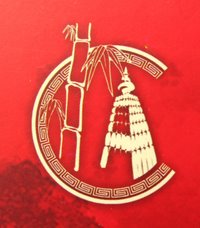Calcutta , September 21, 2013 ( Metro,Page 24 )
The sound of Chinese Hok San drums and cymbals pierced the bustling lanes around Tireta Bazar on Friday morning as a dozen members of Calcutta's dwindling Chinese community waited with bouquets at the entrance of the Toong On Church.
At the stroke of 10, an SUV pulled up in front of the 90- year- old church on Blackburn Lane near Bowbazar and Lim Thuan Kuan, the high commissioner of Singapore, alighted from the car. The drumroll got louder, the lion dancers leapt in the air.
A two- hour excursion through Calcutta's Old Chinatown followed. Metro accompanied Lim through the bylanes of a once- glorious Chinese neighbourhood gasping for revival.
Toong On Church
Built in 1924, it once housed Nanking. " Calcutta's first Chinese restaurant, it had hosted celebrities like Shammi Kapoor," said Dominic Lee, vice- president of the Indian Chinese Association. The restaurant wound up and morphed into Toong On Church last August after a decade- long litigation. A huge Buddha idol sits on the ground floor while the prayer room on the first floor is home to war god Guan Di and his two sworn brothers.
Lim and about 20 community members sat across an old dining table in front of the deity. Paul Chung, the 72- year- old president of the association, was brought up on a chair by two youngsters and placed next to the high commissioner.
" This is my first visit outside New Delhi and I am delighted to be here," Lim said.
" A sapling needs constant supervision and support till it grows into a tree," said Chung, metaphorically explaining the efforts to revive the neighbourhood.
Soon English was ditched.
Mandarin followed and so did siu mai, fish dim sums and several rounds of jasmine tea until Lim got up.
Sea Yip Church
A minute's walk from Toong On is the 108- year- old church with god of compassion Quan Yin as its presiding deity. The wooden staircase leads to an altar carved out of wood. It was imported from China a century ago. Lim's gaze fell on a bamboo box containing fortune sticks. Shake the box till a numbered stick falls out. Depending on the number, a piece of paper is handed out with predictions about a person's future.
Lim gently declined to try his luck! " It is fascinating to see a vibrant Chinese community tucked within the heart of Calcutta," he said outside, breaking into a jog across Lu Shun Sarani to dodge a speeding bus.
Gee Hing Temple
Popular for its mahjong sessions, the temple doubles as a community centre for the 2,000- odd members in central Calcutta. Mahjong is roughly the Chinese equivalent of the card game rummy.
" Ah mahjong!" Lim gushed. " We used to play it quite often in Singapore. It is very popular there," he said, running his fingers through a bowl of mahjong tiles on one of the four tables.
" Many elders spend hours at the temple playing mahjong," said Jospeph Percy Ling, who conducts tourist walks across Chinatown.
Voi Yune Club
A giant portrait of Sun Yatsen, the founding father of the Republic of China, greeted Lim at this temple club. That's not a photograph but a painting, he was told. Lim, mouth open in awe, took a closer look.
The club has a small temple in an adjacent room. Small but 106 years old! Lim lit incense sticks amid beats of the drum and chimes of the cymbals.
Nam Soon Temple
If other temples have clubs and community halls, this one of 1820 vintage houses a secondary school and a small museum.
A winding lane lined with meat shops and shanties leads to a courtyard in front of the temple devoted to the god of commerce.
A room abutting the temple is the museum, where jade vases brush shoulders with swords and ornate divans of opium traders. A cupboard holds an old abacus. " My father would use this a lot," Lim said. " Does it have an Indian equivalent?" Out in the courtyard, a group of students chorused in Mandarin: " Yi er san si wu liu qi ba jiu shi ." Lim bowed and the customary " xie xie " ( thank you) rang out. " I enjoyed exploring the rich Chinese history and heritage," he told Metro . Well, yi er san… means " one two three four five six seven eight nine ten".


